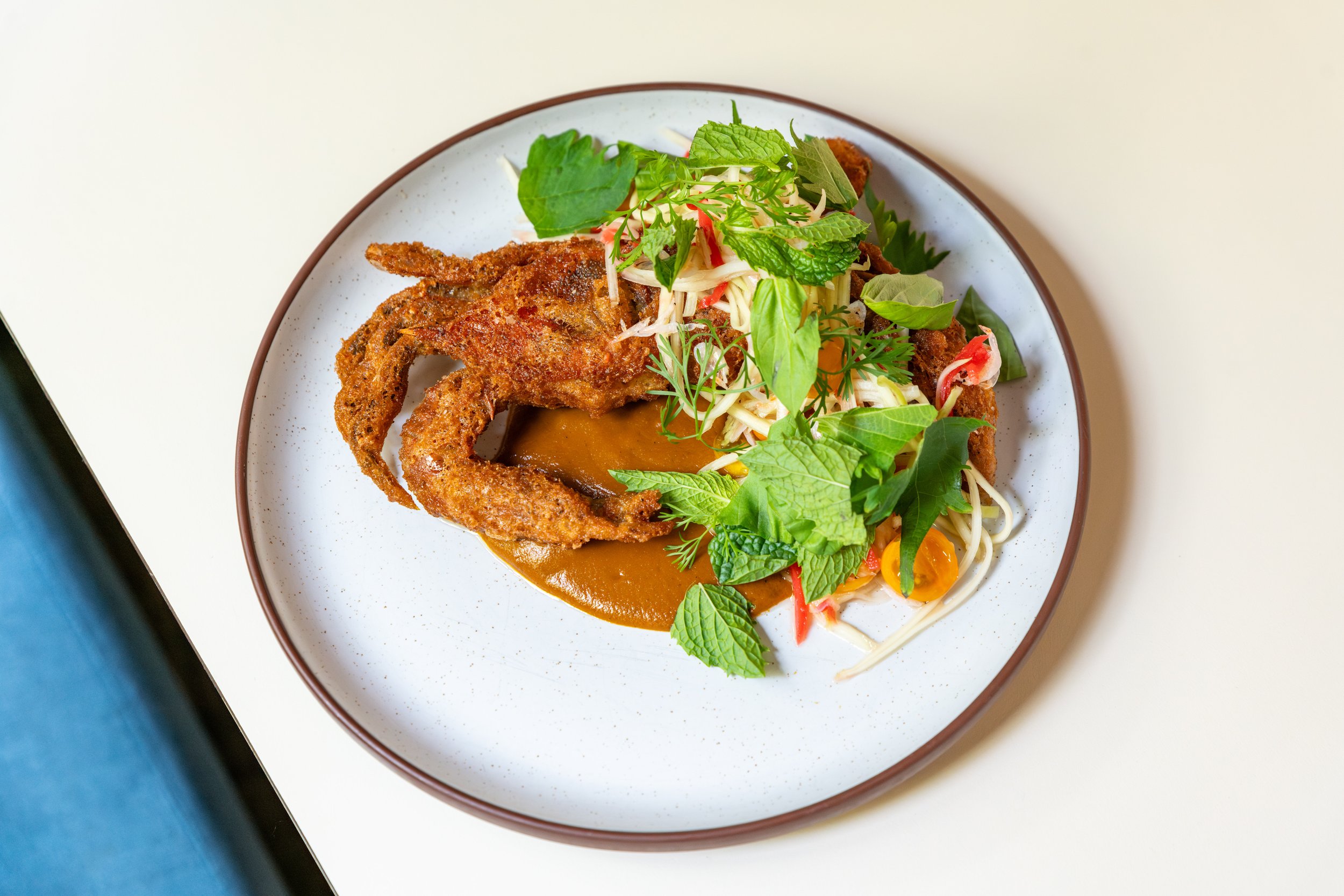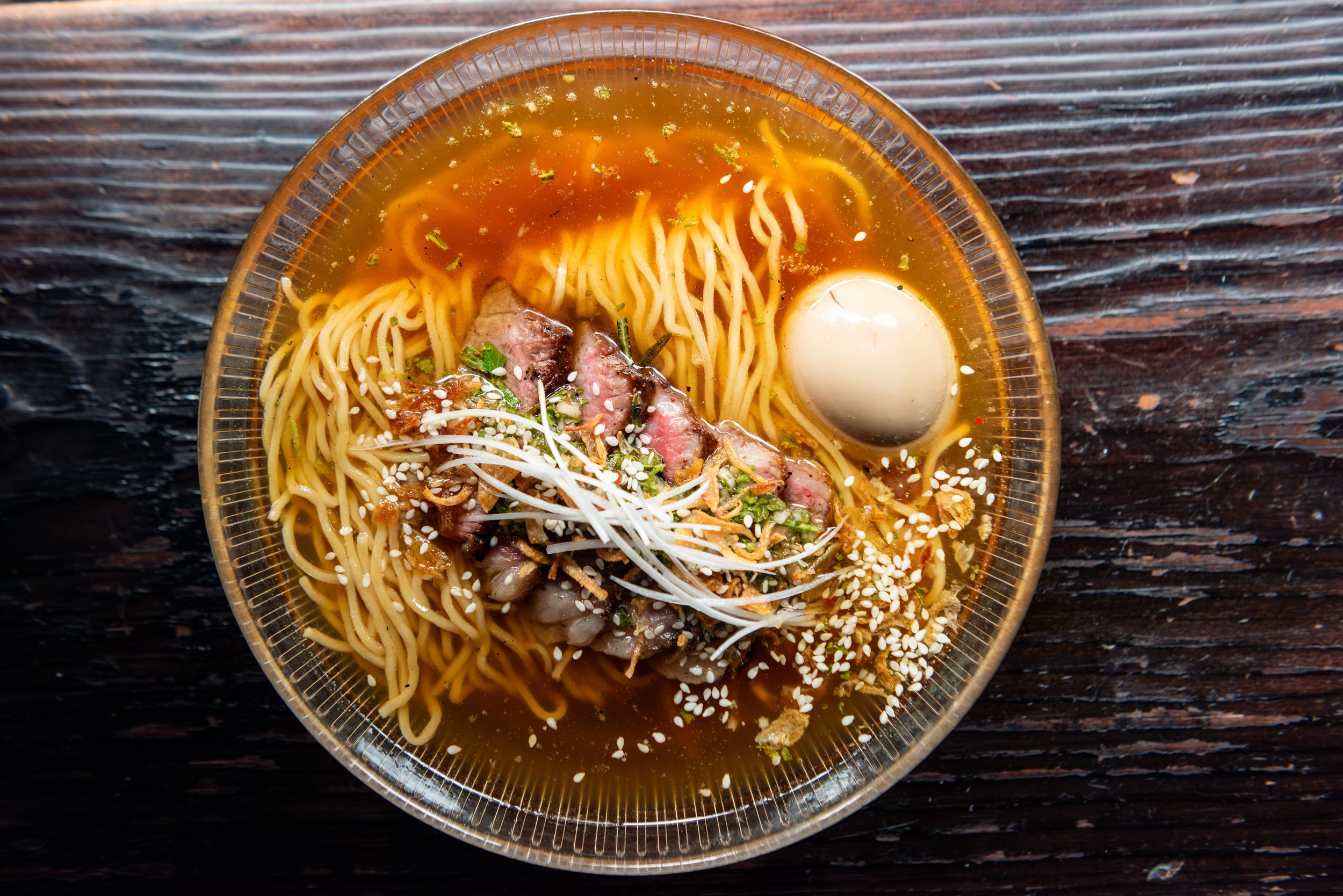Scrappy Seattle
In Seattle, no scrap, no trim, no byproduct is left behind. Chefs are upcycling, cross-utilizing, and repurposing like our lives depend it (and, well, they could!) in order to prevent waste.
In Seattle, no scrap, no trim, no byproduct is left behind. At No Anchor, Rising Star Chef Jaimon Westing makes house vinegars from beer runoff. At Bateau, Rising Star Chef Taylor Thornhill’s use of scrap is so comprehensive that he’s now sourcing scrap for items like his potato ice cream. Seattle chefs are upcycling, cross-utilizing, and repurposing like our lives depend it (and, well, they could!) in order to prevent waste. Here are just a few ways they’re leading the charge for a more sustainable pantry, kitchen, and industry.
LUCINDA GRAIN BAR
Inspired by her grandmother’s chocolate-glazed chiffon cake, Pastry Chef Margaryta Karagodina created a traditional-looking dessert made untraditionally: whole wheat-rye chocolate stout cake, hazelnut tuile, rye-chocolate caramel, strawberry ice cream, strawberry milk-white chocolate crumble. The intense strawberry flavor that lifts the entire dessert comes entirely from strawberry tops. After hulling an avalanche of strawberries during berry season, Karagodina was left with a mountain of strawberry tops. So she cold-steeped them in milk. When you take up this technique, remember the milk must be cold because the acid in the strawberry flesh may curdle the milk.
CONVERSATION
With a butcher-grandfather, Chef Derek Simcik (formerly of Conversation) was taught the inherent value of living off the land and to preserve ingredients. With this in mind, he ferments ingredients like tomatoes using leftover scoby/mother from kombucha or cider vinegar. He also sets aside foie gras scraps for an unpretentious, fun, and memorable freeze-dried foie dessert with plum, white chocolate, and pink peppercorn.
OPUS CO.
Chef Mark Schroder has lucked out. With Tahoma Fuji Sake Brewing Company down the street, not only can he get post-shift junmai ginjos, he can also take advantage of their kasu (sake lees aka leftover rice and koji yeast). He cooks the kasu like a risotto with fish sauce and butter. It’s the super savory and homey backbone to a dish of steelhead trout, grilled radicchio, and poached quince.
EIGHT ROW
Chef David Nichols takes out his juicer for his carrot-habanero aguachile, but he does not throw away his leftover carrot pulp. He dehydrates it for 24 hours, creating a dried carrot powder that gets added to a pasta dough. This becomes a tangy carrot cavatelli mixed with duck confit, beet greens, and of course, a carrot top gremolata.
HEARTWOOD PROVISIONS
We can all pretty much agree that XO sauce is awesome. But there are so many ingredients in it, that it may not be cost effective to make your own. Through thoughtful use of scraps, Chef Kimberly Cosway has overcome that food cost barrier to make a stellar house XO that dots her menu. For example, she saves all the muscle tabs from scallops and all the scraps from the Ibérico ham carving station at Heartwood and throws them in her XO. The house sauce shows up to enhance dishes such as wild sea scallops, chorizo, black garlic, treviso, kale, and parsnip purée.
HOMER
Just like Miss Muffet, Chef Logan Cox eats his curds and whey—leftover whey from house yogurt, to be exact. He cures his lamb ribs in the reserved whey for two days, adding umami and a mild sour-ness to the rack. He roasts the lamb, then serves it with cumin, pistachios, lime zest, autumn pears, and dill crème fraîche.












